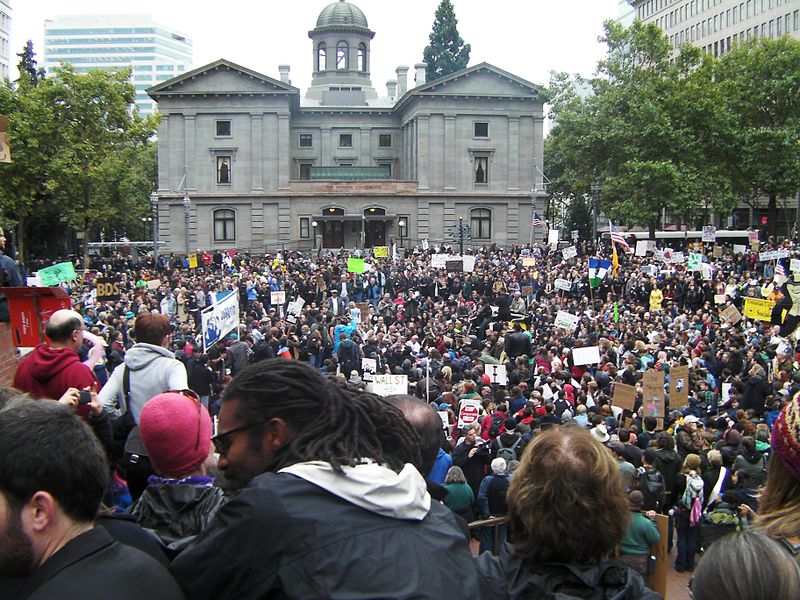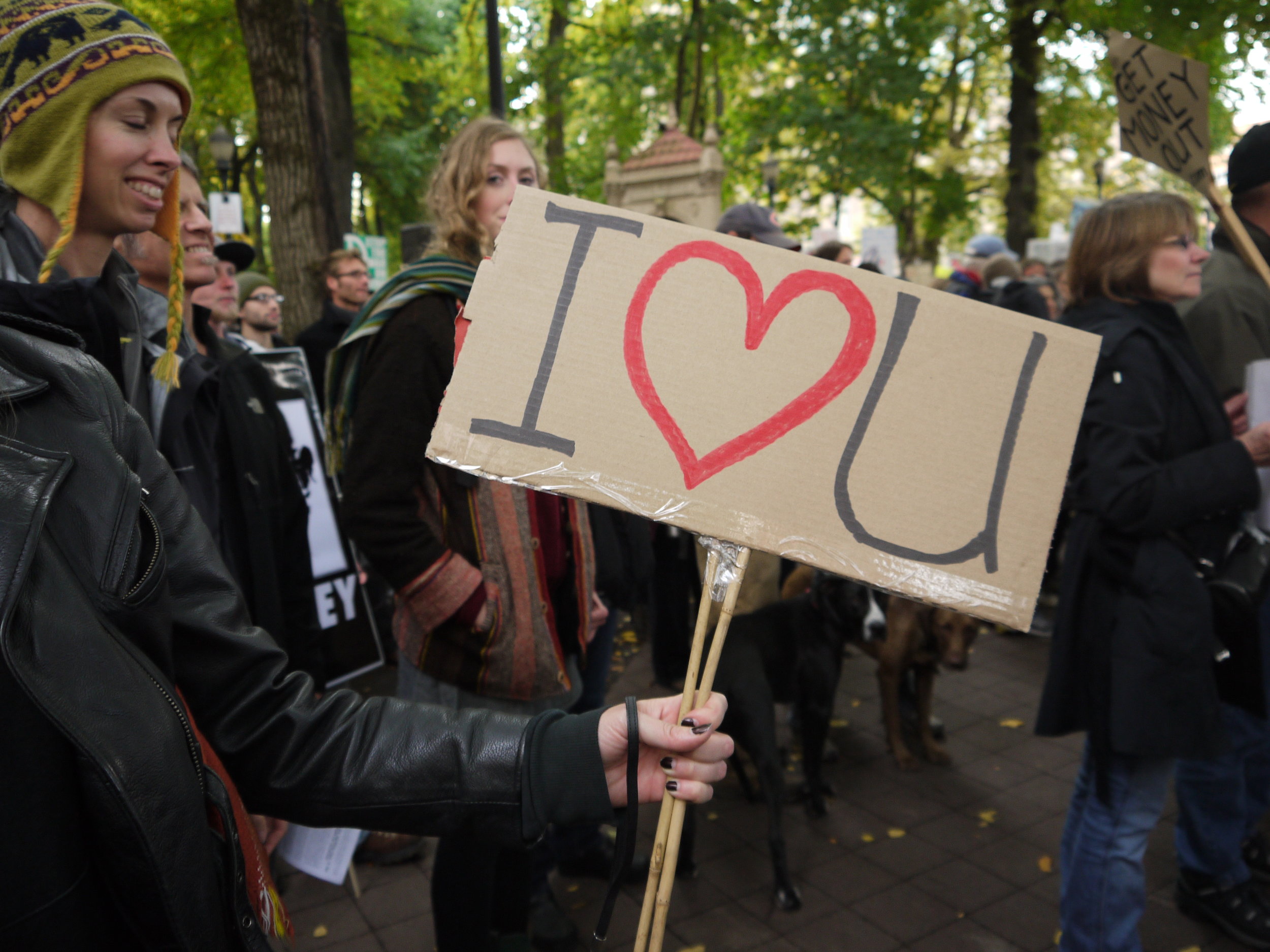An Occupied Anniversary: Public Space One Year Later
September 20th recently brought the first year anniversary of the Occupy Wall Street protests in Zucotti Park, New York City. This time last year brought the Occupy movement to Portland's doorstep in the form of a massive march through downtown, numbering over 10,000 strong, and filling Pioneer Courthouse Square before ending at Chapman and Lownsdale Square Parks in the evening. At that point, I was beginning the first term of my second (and final) year in graduate school studying Urban Studies at Portland State University. The eager urbanist in me celebrated the use of public space in this way - the posters advertising the date, the start of the march on the waterfront, and the overflowing "living room" of Portland's downtown. I marched, as did some of my classmates (as well as the mayor), and I readied myself for what was sure to be a wave of academic discussion on the urban implications of such a camping-protest. Unsatisfied with the level of coverage in the classroom (like the news stations), I set out to gather as much information as possible on this historic event.

Like a dream, the occupation ended nearly a month later, much longer than some other occupations across the country. After I finished conducting my research and said a bittersweet goodbye to this perfect example of our first amendment, I once again readied myself for the hopeful discussions to come regarding the use of public space for free speech in the United Space. What did the movement change regarding the public-private conundrum? In various cities across the country it seemed to be arbitrary - while others allowed for no camping whatsoever, or used violent force, Portland was relatively uneventful from an enforcement perspective. It seemed to be determined by the opinions of the Mayor involved. Mayor Adams has supported free speech as has the city in general in recent history. These specific public space in Portland in particular have seen numerous demonstrations over the years as well, dating back to the Bonus Army protests in 1932. It seems as though the spacial components may also influence the success, or at least ease, of occupying as well. New York City showed that there is a fine line between what is considered public, or semi-public, as was the case at Zucotti Park - a privately owned public space (POPS). How public is public space? While it may be public enough to pass through, you may actually need a permit to hold an assembly if there are any structures or just too many people.
Richard Sennett, a professor at New York University and the London School of Economics, writes recently in The Nation about just such a thought process. For the potential protestor, the Occupy movement raised serious concerns about how and where one is able to assemble without much harassment (not to mention the legal technicalities regarding terms like "open flame" and "camping"). For the designer and urbanist, however, the movement could have bigger implications for how we create and use public space. Rather than planning for this activity here or that activity there, how can we create vibrant Jane Jacobs-esque places that allow for a multitude of activities including protesting? One of the biggest complaints in Portland was that occupiers were denying the public to use parks that provided space for leisurely lunch breaks. While typically these spaces may not be filled to capacity with protestors, it may still be possible to design places that are, as Sennett puts it, "equally family-friendly and protestor-friendly".
In this city, as in many vibrant cities, the combination of Jacobs' diversity and density can create a sense of chaos. Most city-dwellers will tell you that this sort of activity is what makes them live downtown - not only do you get parks and pigeons and cafes, but also street performers and protestors. Sennett, following Jane Jacobs, William H. Whyte, and Jan Gehl (and many others) are taking this movement to heart when discussing urban design. Rather than pushing away the skateboarder or homeless person, we should be embracing the "porosity" of public space in order to truly make cities for all people, including protestors.
